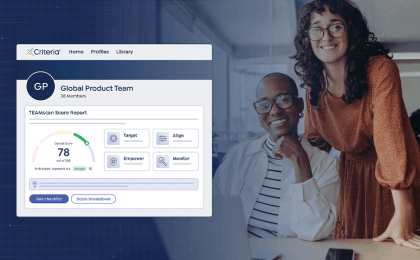Typically, performance reviews are thought of as once-a-year meetings to discuss an employee’s performance, objectives, and career plan over the last year. However, a new trend in employee review techniques is starting to gain traction in the form of continuous performance check ins. Continuous performance check ins are regularly scheduled meetings, often weekly or monthly, that provide a time for managers and their employees to discuss any questions, concerns, or ideas they have. These meetings are designed to keep managers and workers engaged and on the same page. Often, more meetings can just feel like more interruptions to your busy workweek. However, there are a lot of benefits to these regular “one-on-one’s” that can improve both you and your employees’ overall performance.
1. Identify, track, and maintain goals
For one thing, it’s much easier for you to know what an employee’s goals should be if you check in with them regularly. You will have a much better understanding of your workers strengths and limitations if you see how their performance is progressing over relatively short periods of time. With this information, you can design goals that reflect their evolving capabilities.
These meetings also help you understand when goals may need to change, and if employees need to pivot their focus. This can save you from wasting time on projects or tactics that just aren’t working. Overall, regular check ins can help keep employees on track and put your mind at ease that things are going smoothly because you’re consistently evaluating their progress.
2. Prevent miscommunications
Regular check ins also make it easy to compare notes and make sure everyone understands what they’re supposed to be doing. At work, miscommunications about directions or expectations happen all the time. You can curb these misunderstandings with regularly scheduled meetings to ask questions and discuss progress. It also offers you a designated time to bring up any concerns on a project. This way, both you and your employee are confident your questions will be addressed without disrupting either of your workflows.
3. Keep everyone engaged
Employee engagement is one of the top concerns in HR these days. Regularly checking in on the people who report to you allows you to evaluate their level of engagement. Talking to them about what’s going well and what isn’t means their issues don’t fall to the wayside and shows that you’re invested in their comfort and success. In general, it’s much harder to check out of a project if you make a point to discuss it regularly. This way, no one can forget or avoid important tasks. It also gives you both a time to reassess and reprioritize your related responsibilities.
4. Take pressure off year-end performance reviews
End-of-year reviews can be intimidating. But just like weekly quizzes can make a final exam less threatening, weekly meetings mean you and your employees know what to expect when it comes time for their year-end review. You also give yourself a chance to nip performance issues in the bud since you can identify and solve any potential problems as they arise. That means you avoid months of potential mistakes and relieve some of the pressure of the annual performance review. Conversely, it also gives you the opportunity to praise good behavior often, keeping employees engaged.
One of the other main benefits of regular performance reviews is that it helps you more accurately evaluate an employee’s performance over the course of the whole year. If you only conduct reviews once a year, you’re liable to evaluate their performance based solely on their most recent work.
5. Get insight into how you can be a better manager
Performance reviews should always be a two-way street. Just as you work with your employees to help them achieve their goals, they can help you reach your goal of being a good boss. Use the time you set aside to work on your management skills. Don’t be afraid to ask them what you can improve on to be a better leader for them. This way, when it comes time for your own year-end performance year, you’re just as prepared as they are.





